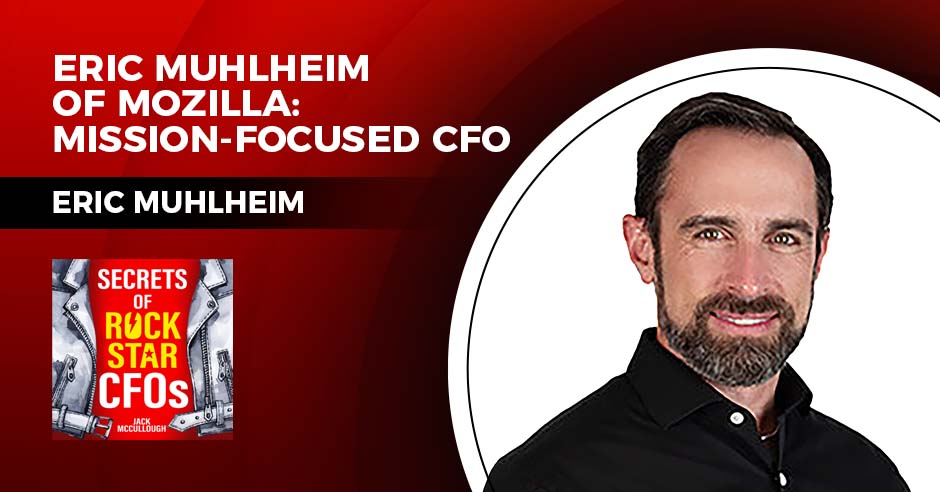Red Hat, an open-source technology company based in Raleigh, North Carolina, recently combined its finance functions with the sales side of the business—and now has its CFO, Robert Leibrock, reporting to the COO.
Leibrock told StrategicCFO360 that the shifts are part of making sure the two areas are “complimentary, not competitive,” data is properly leveraged, and everything is more efficient. Would this arrangement work for you?
Red Hat recently combined the finance functions with sales operations under your team, and you now report to the COO. How is that playing out and what are the benefits?
This has been an exciting and necessary change for our organization as we evolve our stakeholder experience and influence across Red Hat. While I believe that finance and operations teams hold unique thought leadership that should check and balance each other, it’s important to acknowledge they support similar stakeholders, and the relationship needs to be complimentary versus competitive.
We are seeing benefits from the combination of these teams in one organization on three dimensions—data and analytics, tasks and workflows, and stakeholder experience. Our business model is rich with data and insights that allow us to improve the way we operate and scale. It’s important to have a single version of truth when it comes to that data and agree on approaches to track performance, our KPIs.
This consistency, as well as defining single ownership across our workflows, not only is a more efficient way of working but also provides a similar—and better—experience for our stakeholders across sales, and also at enterprise level.
What is the strategic role that the CFO team plays across the business and what value do you see the function adding?
In the last few years, the role of the CFO itself has shifted. We’re now seen as a more strategic and proactive role than we were even a decade ago, evolving as a crucial part of helping the organization validate and execute our strategy.
At the same time, we’re often seen as one of the first lines of defense in risk management and reacting to macroeconomic conditions. By extension, the finance organization now has a seat at the table in strategic conversations that go far beyond just budgets, forecasts and accounting. As business partners to the rest of the organization, we have the ability to help drive more informed decision-making, while building accountability for how every team can contribute to the company’s success.
A large-scale example of this relationship at Red Hat is a CFO-driven initiative to expand the financial acumen and readiness of associates across the organization. We’ve set up a series of quarterly, company-wide meetings that take a deep dive into different finance topics. The goal of these sessions is to enable associates to better understand our business model, ask more informed questions and better prioritize their own work to achieve our company goals.
I see these discussions energizing associates in Red Hat—not because they want to talk about the numbers, but because they are passionate about Red Hat’s mission, and they see these financial discussions about our business as a way to accelerate our impact.
How do you use data to inform decisions?
We all know data and analytics are crucial to the success of any organization, and a competitive advantage when done right. This is the case at Red Hat, and I see the need and pace of change here accelerating.
Red Hat is about 30 years young and built our success on a simple business model of selling software subscriptions that translate into revenue at sale. As you see in our strategy, we are at the center of clients’ hybrid cloud strategy so we have evolved our portfolio to adopt multiple different business models that fit customer needs. These include more on-demand, pay-as-you go models in cloud marketplaces, as well as more consumption-based models aligned to cloud value propositions.
These changes not only generate more data for us to consume, but increase the importance of real-time analytics and insight for us to direct our investments. We use analytics across all of our business models to inform the way we direct product investments, sales investments and investments across our ecosystem.
In my view, the future of finance depends on professionals having an understanding of the business they are supporting outside of their functional area of expertise. Learning how sales, marketing, and products and engineering come together across our different business models is essential to success. Our influence here is not going to be because we are more technical or better at selling, but instead because of data and analytics.
My team is looking at financial data across Red Hat with an understanding of how we operate, what the objectives are, and then can influence better decisions for the company. Data helps propel companies forward and we can’t live in a world without it today. It’s how we track things. It’s how we see what’s going off the rails. The more we can dive into the data, the more we understand the problem we’re trying to solve.
How are you using technology and automation to make your team and stakeholders more efficient, especially during a tough economic climate that is demanding companies do more with less?
Red Hat’s finance team is constantly working to automate many of our workflows that consume the time of our associates and prevent focus on more high-value projects. For example, we have made some great improvements in our travel and expense tools. We’ve better integrated our systems to make the submission process simpler, even auto-populating information where possible.
We’ve also been implementing automation for monitoring third-party risk reviews and for our requisition review and approval processes. The biggest benefit for the team is that we’re able to cut down on the time needed to complete these necessary but often tedious tasks. We’re able to move more quickly, save money and reduce errors when we use automation, which benefits both Red Hat and our customers.
Our hope as we continue to automate wherever possible is that associates are able to move past the mundane tasks that offer little in the way of career fulfillment, and explore new skills and areas for development. This is something that I’m deeply passionate about and will continue to champion, as career growth and development is so critical to our future success.
What parts of the CFO team does technology have a big impact on? How will the function change in the future as automation becomes more prevalent?
We’re focusing on adjusting our processes, especially those that can be simplified and automated in support of our stakeholders. For example, we’re prioritizing the automation of contracts that support our hybrid cloud strategy. Customers want more flexible buying options, and as a team that supports these workflows, flexibility can break previously automated workflows and translate to more manual tasks. As a support team, we need to adapt and enable Red Hat to pursue these strategies in a scalable way.
When I think about the value of automation for CFOs across different industries, not just software, it really comes down to the ability to scale effectively. At some point, hiring and skills can become a limiting factor for the business. Automation can allow the business to scale, but we need to continually be ready to adapt.
How have you set up your team for success, especially in the face of economic uncertainty?
The best thing that I can do for my team is to help keep them focused on our most critical priorities. The things that are going to help keep the business successful. Red Hat is in a strong position, but across the company we’re asking our associates to simplify. That doesn’t necessarily mean “do less.”
What we’re asking is that associates put their efforts into the projects and actions that are closest to our strategic objectives and will have the greatest impact. In some cases that may mean doing fewer things better, other times it may mean redirecting our energy toward new tactics that drive greater return on investment.
In addition to giving our associates clarity around the top priorities, as leaders we need to constantly evaluate the way our teams are connected. What’s working, what’s not, and do we have the right people in the right seats to contribute at the highest levels. It’s important to embrace change when decisions are made thoughtfully and with the long-term goals in mind.








